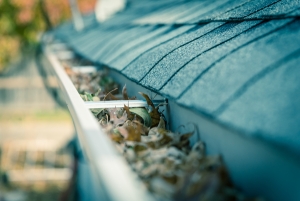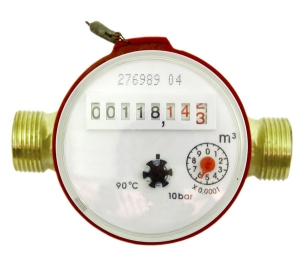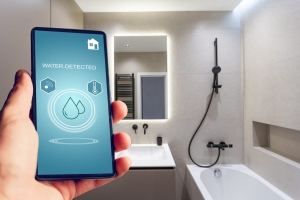1. Regularly Check for Leaks
Early detection can save your home from extensive damage. Regularly inspect:
- Roof: Ensure there are no missing or worn-out shingles.
- Appliances: Check hoses in your dishwasher, refrigerator, and washing machine for cracks.
- Bathrooms: Ensure no leaks around your bathtub, toilet, and sink.
This guide by Chubb provides a comprehensive checklist for homeowners to detect potential water leaks.
2. Clean Gutters and Downspouts
Blocked gutters can cause water to overflow and accumulate around your home’s foundation. Cleaning them at least twice a year can prevent this.

3. Know Your Water Main
Knowing where the main water shut-off to your house is crucial. If there’s a leak, turning off the water main can prevent further damage. The III emphasizes the importance of this knowledge for every homeowner.
4. Install a Sump Pump
For homes that are prone to flooding, installing a sump pump can be a game-changer. It helps to remove water that has entered the basement and can be crucial for homes in low-lying areas.
5. Check Your Water Bill
A sudden spike in your water bill can be a sign of a hidden leak. Regularly monitoring your bill can help detect issues before they become severe.

6. Protect Your Basement
Basements are often the first place to flood during heavy rainfall. Some measures to consider include:
- Sealants: Apply sealants to any cracks or holes in your basement walls and floor.
- Waterproofing: Consider professional basement waterproofing to provide an added layer of protection.
7. Maintain Vegetation and Landscape
Strategically planting certain trees and plants can help prevent soil erosion and reduce the risk of water damage. However, be mindful of certain trees with invasive roots that can damage your home’s foundation.
8. Install Water Detection Devices
These devices can alert homeowners when there’s a leak. As highlighted in Chubb’s guide, early detection is crucial to minimizing damage and saving on repair costs.

9. Elevate Your Appliances and Utilities
In areas prone to flooding, elevating appliances like your washer, dryer, and electric panels can prevent potential damage. This tactic is also emphasized by FEMA’s guidelines.
10. Get Flood Insurance
Even with all the preventive measures in place, sometimes nature has its way. Thus, having flood insurance ensures that, in the unfortunate event of flooding, you’re not left bearing the financial burden.
11. Monitor the Weather
Be vigilant during heavy rainfall or storm forecasts. Preparing ahead of time can significantly reduce potential water damage.
![]()
12. Redirect Water Flow
Ensure that your home’s grading directs water away from the foundation. Sloping the ground away from your house can prevent pooling and potential seepage.
13. Upgrade Water Valves
Consider installing a more advanced water valve system. This can automatically shut off if anomalies in water flow are detected, as suggested by [isure.ca](https://isure.ca/inews/how-to-protect-your-home-from-water-damage/).
14. Regular Maintenance is Essential
Like any preventive strategy, consistency is key. Regular checks, maintenance, and updates will go a long way in keeping your home water-tight and damage-free.
Final Words
Water damage is more than a household nuisance, it’s unpredictable and a lurking financial, structural, and health threat. By staying proactive, homeowners can effectively minimize risks and protect their most significant investments—their homes.
If the unforeseen happens, remember that Renovco‘s expertise in fire and flood restoration is unmatched in the Montreal area. We’re committed to helping families restore their homes and peace of mind.

